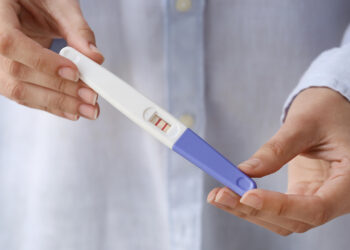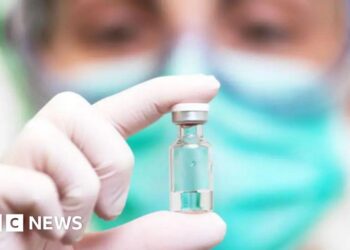Comparing metagenomic profiles of the skin microbiome in immunosuppressed patients and those at high and low risk for cutaneous squamous cell carcinoma (SCC) revealed distinct expansions in fungal and viral taxa in the first two groups, according to the authors of a recent research letter reporting the results. Such differences one day may help clinicians identify patients at high SCC risk, they added.

Currently, physicians identify patients at high SCC risk based on whether they have had several prior SCCs. Analyzing skin microbiome changes to identify patients at high SCC risk before they develop several SCCs could revolutionize dermatologic care, senior author and investigator, Shadmehr Demehri, MD, PhD, said in an interview. He is the Arthur and Sandra Irving Endowed Chair in Cancer Immunology and director of the High Risk Skin Cancer Clinic at Massachusetts General Hospital in Boston.
Although age, ultraviolet exposure, and immunosuppression are well-known SCC risk factors, Demehri said, the skin microbiome’s contribution to SCC risk remains unclear. To explore this issue, he and his coinvestigators conducted comparative metagenomic analyses of skin microbiomes from 30 patients: six with high SCC risk (> 2 prior SCCs), nine with low SCC risk (≤ 2 prior SCCs), and 15 solid organ transplant recipients (SOTRs). The results were published online in July in the Journal of Investigative Dermatology.
Using swabs from six bilateral anatomical sites per patient, with air swabs as negative controls, the investigators performed shotgun metagenomic sequencing and differential-abundance analyses to compare relative taxa populations across patient groups. After an analysis of 249 metagenomes, high-risk individuals had the highest mean SCC count (11.8), followed by SOTRs (8.73) and low-risk individuals (0.33).
“Compared with low‐risk SCC subjects,” Demehri added, “both solid organ transplant recipients and high‐risk SCC subjects showed higher relative abundances of eukaryotes, such as Malassezia restricta and M globosa, and viruses such as Betapapillomavirus.” Moreover, these taxa showed robust differences and strong discriminatory power between patient groups, indicating their potential utility as signatures of elevated SCC risk, he told Medscape Medical News.
Which Comes First?
Currently, it remains unclear whether the relative expansion of certain skin microbiome components directly drives SCC pathogenesis or reflects underlying immune alterations that raise SCC risk indirectly. And despite the eukaryotic expansions observed in the high-risk and SOTR groups, researchers saw no between-group differences in Malassezia-related conditions such as seborrheic dermatitis. Yet subclinical expansions in Malassezia and viral taxa still may translate into increased SCC risk, Demehri said.
Accordingly, he said, dermatologists must not assume that people who develop certain viral and fungal skin diseases are at higher risk for SCC. “It’s more subtle changes, probably in association with other microbiome changes, that seem to be associated with skin cancer risk.” Nonetheless, Demehri said, watching for skin conditions that signify an expanded skin microbiome — such as the appearance of warts in fair-skinned adults — may signal the need to monitor for SCC risk.
Commensal Concern

Sancy A. Leachman, MD, PhD, professor and vice-chair of faculty development in the Department of Dermatology at the University of Utah, Salt Lake City, said that although the study requires replication in larger, prospective cohorts, its findings are provocative for several reasons. She was not involved with the study but was asked to comment.
Dermatologists are starting to embrace the skin microbiome concept but rarely beyond bacteria and yeasts, Leachman told Medscape Medical News. “I don’t believe most dermatologists are thinking about papillomaviruses being commensal: present on your skin as a normal part of your microbiome,’ she said. The observation that baseline papillomavirus populations can exist on normal-appearing skin without causing pathology is important information, she added. “What is their purpose there? What’s the evolutionary advantage?”
A study published in Cancer Cell in January 2025 showed that commensal papillomaviruses can boost immune surveillance and clearing of UV-induced p53-mutant keratinocytes. “It appears that the commensal papillomavirus population may help to stimulate the immune system in a way that helps the immune response against skin cancer,” Leachman said.
Papillomaviruses work primarily through p53. “So if you’ve developed an immune reaction against a p53 element of the papillomavirus,” Leachman said, “there’s a possibility that might cross-react with abnormalities of the p53 pathway in squamous cell carcinomas and act like a mini-vaccine against the tumor. And if that’s true, could you do that intentionally as a therapeutic or prevention strategy?”
Human Papillomavirus (HPV) vaccines have proven highly effective in preventing cervical cancer. However, she said, based on the results of commensal HPVs protecting against SCC, it is unclear whether elimination of commensals by the vaccine could render some women more or less susceptible to SCC later in life.
“If those papillomavirus vaccines cross-react, and you’re diminishing the commensal papillomaviruses that are helpful in recognizing squamous cell carcinoma,” she asked, “are you going to have people who experience an idiosyncratic increase in squamous carcinoma because the HPV vaccine prevents development of a robust commensal population of helpful papillomaviruses? I don’t believe anyone has even examined alterations of commensal HPV populations following vaccination.”
Functional Immunosuppression
One of the study’s most tantalizing findings requiring further follow-up, Leachman said, is that the nonimmunosuppressed high-risk group (median age, 78.5 years) was much older than the low-risk group (63.0 years). “That says there’s probably some sort of functional immunosuppression occurring in those high-risk people.”
As baby boomers age, Leachman added, the population with immune-system senescence will grow. “If you can use solid organ transplant recipients as a model for the aging population that is becoming functionally immunosuppressed, that would be very beneficial, to know how to tailor treatments, detection methods, and even potential risk evaluation methods for these people.”
Anecdotally, Leachman has identified a group of patients with what she calls systemic “skin failure” — elderly patients at an extremely high SCC risk who routinely have multiple skin cancers and precancers excised. “Generally, those people are older and have an apparent functional immunosuppression; in my hands, they seem to respond better to topical imiquimod than topical 5-fluorouracil.”
Based on years of clinical observation, she prescribes topical immunotherapy rather than topical chemotherapy depending on patient age and the number and (wart-like) appearance of their SCCs.
Microbiome Manipulation?
In the interview, Demehri said that although it might be tempting to try and alter the skin microbiome through supplements or topical agents, nothing in the study suggests a cause-and-effect relationship such that modifying the microbiome would directly affect SCC risk. Therefore, he said that along with SCC detection and monitoring, immunosuppression and its role in skin cancer development should receive more emphasis.
Presently, Demehri’s lab is exploring ways to detect and monitor microbiome changes more feasibly than through costly shotgun sequencing. “It’s not something we can do for every patient all the time to monitor their skin. But there are ways we could extract that information more directly from the skin by swabs and then inform the physician that the patient might be at risk of cancer as well because their microbiome is being altered in ways that are associated with increased risk.” Broad adoption of such techniques, he estimated, is perhaps a few years away.
This study was supported partly by the Intramural Research Programs of the National Human Genome Research Institute (NHGRI) and the National Institute of Arthritis and Musculoskeletal and Skin Diseases (NIAMS) at the National Institutes of Health. Study coauthors were from the Center for Cancer Immunology and the Cutaneous Biology Research Center at Massachusetts General Hospital and Harvard Medical School, Boston, and from the NHGRI and NIAMS. Demehri had filed a patent for the development of T cell-directed anticancer vaccines against commensal viruses. Other authors had no disclosures. Leachman is an investigator or advisor for several companies involved in screening and early diagnosis of melanoma but reported no relevant financial relationships.
John Jesitus is a Denver-based freelance medical writer and editor.
For more news, follow Medscape on Facebook, X (formerly known as Twitter), Instagram, and YouTube.
Source link : https://www.medscape.com/viewarticle/skin-microbiome-changes-may-affect-risk-squamous-cell-2025a1000kyl?src=rss
Author :
Publish date : 2025-08-07 08:51:00
Copyright for syndicated content belongs to the linked Source.











